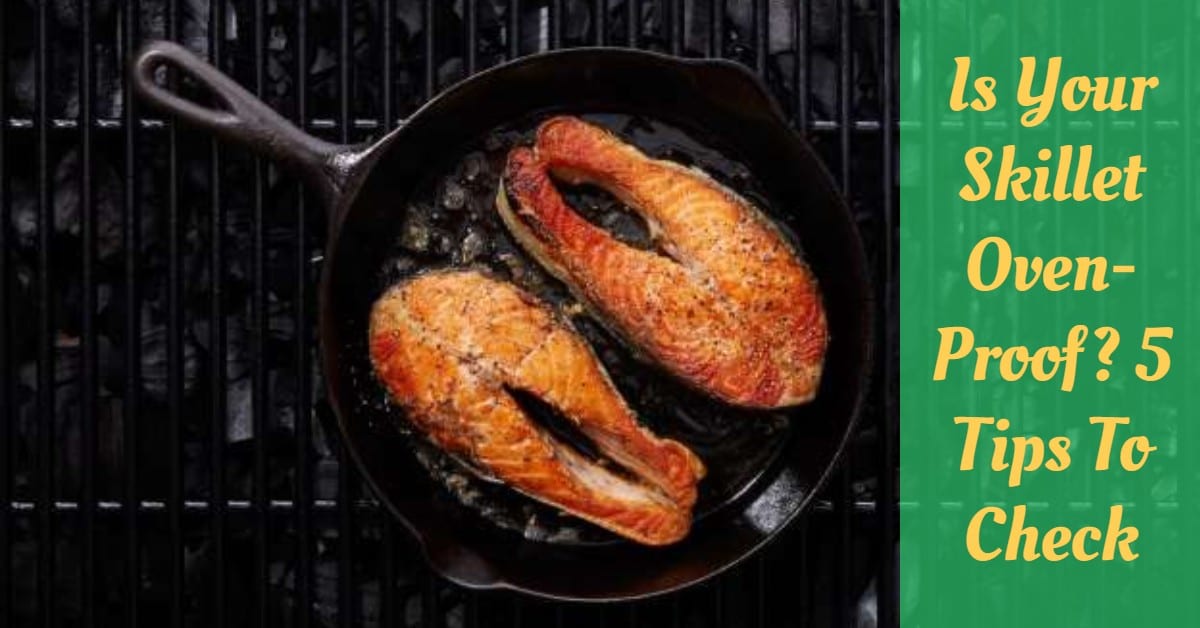 One of the main things to pay attention to when cooking is safety. You don’t want to use the wrong vessels for heating to watch them explode, right? That’s why it is essential to pay attention to all the materials which you are using in your kitchen.
One of the main things to pay attention to when cooking is safety. You don’t want to use the wrong vessels for heating to watch them explode, right? That’s why it is essential to pay attention to all the materials which you are using in your kitchen.
Sometimes it is hard to tell if your pan is oven-proof or not. Because if it is, the baking becomes so much easier and you have significantly more possibilities for various dishes.
Choose the best skillet for your kitchen in these reviews:
However, if you put a pan that isn’t oven-safe in your oven, you may wind up with melted handles, ruined food, and toxic fumes. But how to check this for sure? Here are some tips to do that.
1. Look for the signs
Usually, the oven-proof skillets have a sign on them indicating they are oven-proof. Also, look if the skillet has the text on its bottom saying if it’s oven-proof or not. Besides, any dish or pan that is marketed as a baking dish should be safe for oven use. Those can be such items as casserole pans, baking pans, and bakeware.
2. Check the materials
 Apart from the signs, it is really helpful to know the materials that you can safely put into an oven. Take into consideration, that metal and ceramic pans are oven safe. Nonstick coatings on metal or ceramic pans may or may not be oven safe, so you should check the writing on the bottom of these pans or read the manufacturer’s guidelines.
Apart from the signs, it is really helpful to know the materials that you can safely put into an oven. Take into consideration, that metal and ceramic pans are oven safe. Nonstick coatings on metal or ceramic pans may or may not be oven safe, so you should check the writing on the bottom of these pans or read the manufacturer’s guidelines.
For example, cast iron pans are oven-safe as well. In fact, they are made of pure metal. It is not recommended to rely on a material such as plastic for nonstick qualities. You can’t put them into the oven only in case if its handles are made of plastic which is extremely rare. Usually, the handles are also made of heat-proof materials.
Many substances used in pan construction such as Teflon and other nonstick coatings are safe up to temperatures of 500 degrees Fahrenheit.
3. Deal with handles
 If you started a recipe and then found out that it requires putting your pan into an oven, there are some ways to cover the plastic handles of it. You can always wrap the handles to protect them from heat.
If you started a recipe and then found out that it requires putting your pan into an oven, there are some ways to cover the plastic handles of it. You can always wrap the handles to protect them from heat.
For those purposes, use the aluminum foil so it will keep the plastic more or less cool (up to a certain temperature – that’s why you should watch the overall temperature in the oven) and will protect it from melting.
Another effective solution for protecting the handle is to cover it into a wet towel and then wrap the paper towels with aluminum foil. The paper towels need to be soggy enough that the moisture in them won’t evaporate during the time the pan is in the oven.
But in this case, watch out that the temperature in the oven won’t be higher than the temperature of the boiling water (212 degrees Fahrenheit).
4. Heat-Resistant Coating
In some cases it’s not really important of which materials are you skillet made of, but if it has the heat-resistant coating. The coating can improve cookware performances, but it also often limits heat resistance.
That’s why it is always good to read the instructions before the usage, where it should be stated, which type of heat-resisting coating is used and which temperatures it is capable to handle.
5. Oven-Proof Lids
This tip is only important if you are going to bake with a lid. First of all, the glass lids are only oven-proof up to 400°F and if there are no non-heat resistant components in them. Unfortunately, some lidded pans have plastic knobs that are not compatible with the oven. To measure the temperature in the oven, you can use a special thermometer.
 Plastic knobs are good for providing the protection to keep your hands safe from burning when you are cooking on the stovetop, but when you put them in the oven they can just melt.
Plastic knobs are good for providing the protection to keep your hands safe from burning when you are cooking on the stovetop, but when you put them in the oven they can just melt.
The classic phenolic knobs are more thermally resistant than plastic ones, making the lid oven safe up to 375°F. The phenolic lid knobs have a risk of becoming brittle if they are exposed to temperatures higher than 375 degrees.
If you still want to make your lid oven-proof, there is only one way to do that. You can buy a stainless steel replacement knob. It will be getting hot during normal cooking and baking, but it won’t melt like plastic ones. Just don’t forget to wear special gloves before touching it.




